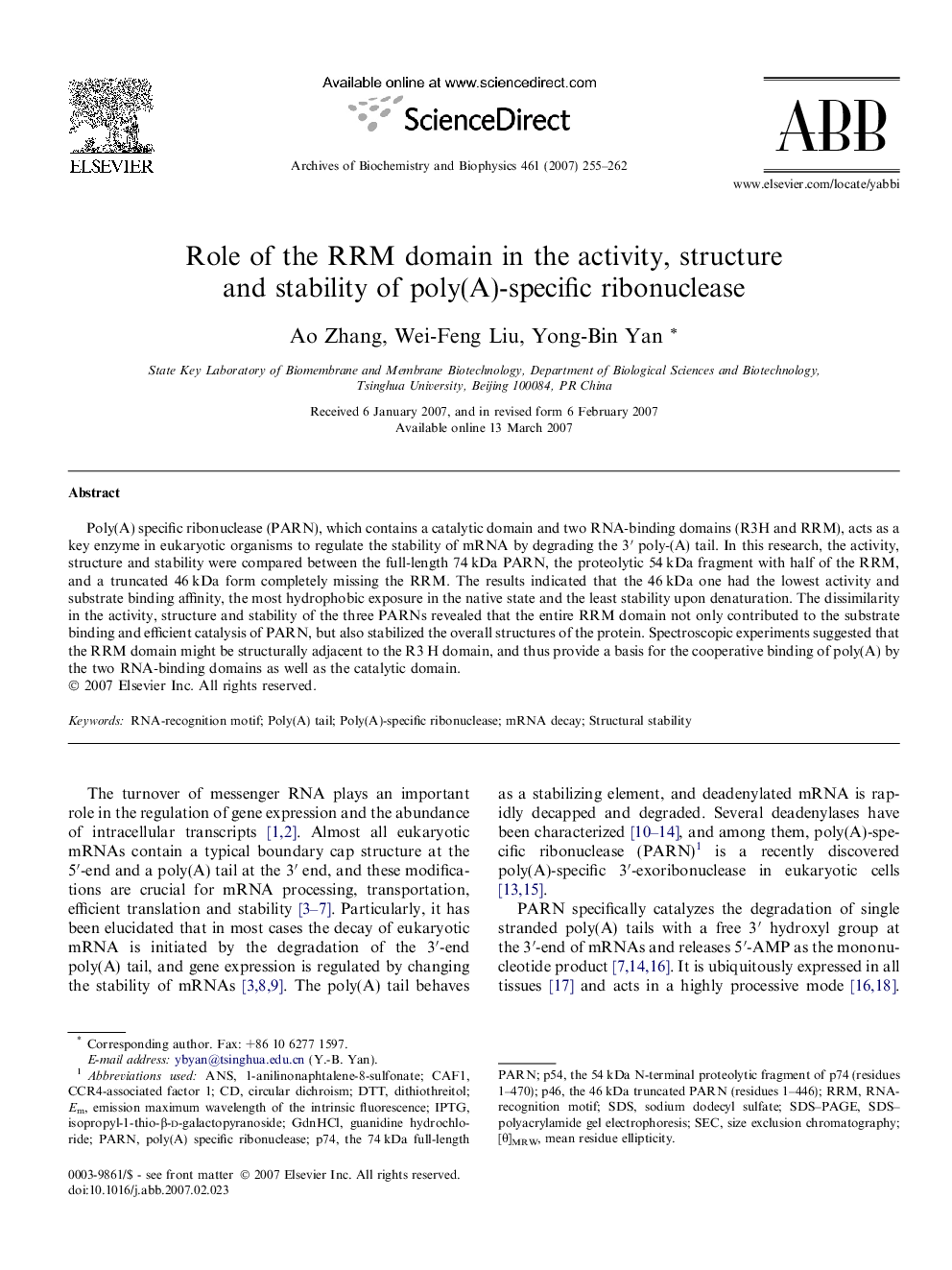| Article ID | Journal | Published Year | Pages | File Type |
|---|---|---|---|---|
| 1927182 | Archives of Biochemistry and Biophysics | 2007 | 8 Pages |
Poly(A) specific ribonuclease (PARN), which contains a catalytic domain and two RNA-binding domains (R3H and RRM), acts as a key enzyme in eukaryotic organisms to regulate the stability of mRNA by degrading the 3′ poly-(A) tail. In this research, the activity, structure and stability were compared between the full-length 74 kDa PARN, the proteolytic 54 kDa fragment with half of the RRM, and a truncated 46 kDa form completely missing the RRM. The results indicated that the 46 kDa one had the lowest activity and substrate binding affinity, the most hydrophobic exposure in the native state and the least stability upon denaturation. The dissimilarity in the activity, structure and stability of the three PARNs revealed that the entire RRM domain not only contributed to the substrate binding and efficient catalysis of PARN, but also stabilized the overall structures of the protein. Spectroscopic experiments suggested that the RRM domain might be structurally adjacent to the R3 H domain, and thus provide a basis for the cooperative binding of poly(A) by the two RNA-binding domains as well as the catalytic domain.
